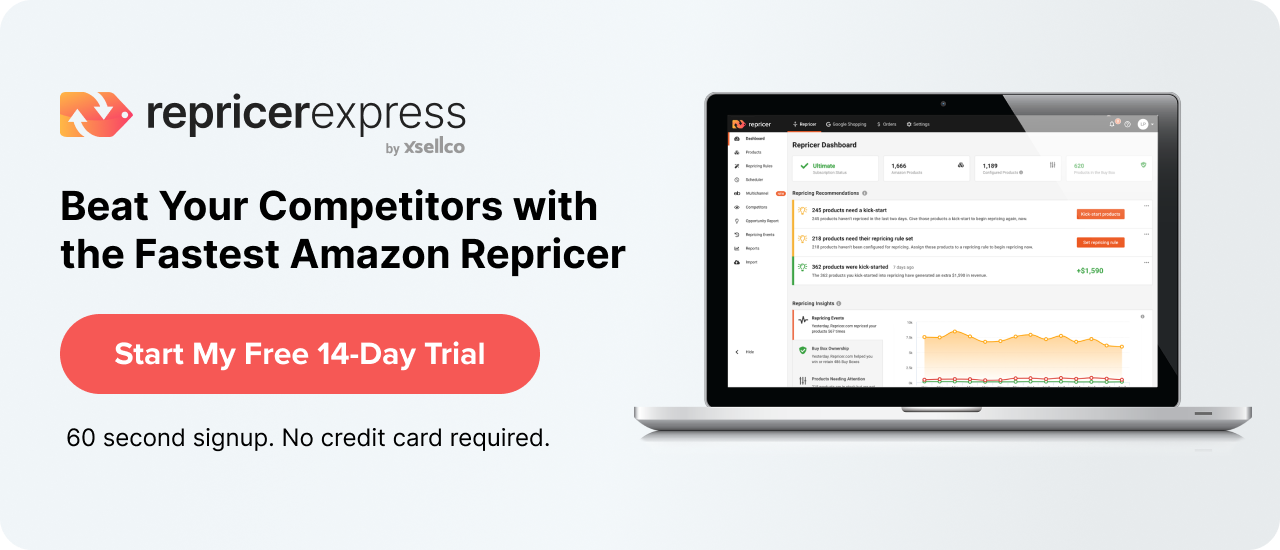They sound just about the same, but there are some pretty big differences between Amazon Vendor Central and Amazon Seller Central. And as usual, RepricerExpress has put on its sleuthing hat and detective goggles to bring you the truth, so pay careful attention, gumshoes.
The Biggest Differences: Specialisation and Exclusivity
Just about anyone can use Amazon Seller Central to get selling on the marketplace. If you’re a third-party seller and you want Amazon shoppers to see your inventory on the site, then Seller Central is a good option for you. You’re not quite an Amazon seller because it’s your own products you’re listing on Amazon’s site, but you still get to take advantage of all the eyeballs that look in on it daily.
Plus, you still retain control over things like what your items are priced at and what goes into their listings. And if you’re really smart, you’ll use Fulfilled by Amazon to take a big load off your shoulders so you can focus on more important things, like making more money from moving more items.
Having said that, there are two main differences between that and Amazon Vendor Central.
Exclusivity: We said that pretty much anyone can use Seller Central, but the same isn’t true for Amazon Vendor Central. It’s invite-only, meaning you have to be pretty prominent on Amazon’s radar to even warrant consideration for it. The two main types of sellers who get this second kind of look are big companies and popular brands, as Amazon feels they’ve proven themselves enough to get that extra exposure.
Seller Status: With Seller Central, you’re a third-party seller. But with Vendor Central, you’re not. You’ve now been bumped up to the class of first-party sellers. What this means is that Amazon will do the selling for your products for you by pricing it themselves and then paying you. In essence, you’ll be a supplier and Amazon will be your buyer.
Other Stuff that Sets Amazon Vendor Central Apart
Membership in the Amazon Vine Program: You know how services like Airbnb and Couchsurfing allow users to write reviews about each other? Well, it’s the same sort of concept with Amazon Vine, except you’re getting the marketplace’s top reviewers to say (hopefully good!) things about you. What sets it apart from plain ol’ Amazon feedback is the marketplace mainly uses it to leverage new or pre-released items so that customers can get an early scoop on what a product is all about.
How your inventory gets taken care of: If you’re a ‘regular’ seller, then you have to take care of all the details of your inventory and how it gets shipped out, whether you do it by hand or use FBA. The upside is you get control over every aspect of it, but the obvious downside is you’re saddled with tons of decisions — and responsibility. But with Vendor Central, Amazon will take care of all of that for you. And better yet, if think they’ve met their quota on a particular item, you get the remaining stock and are free to do with it what you want.
When you get paid: Okay, this is one difference that we’re maybe not so crazy about. If you deal with Seller Central, then your payout happens pretty darn fast. But if you’re part of Amazon Vendor Central, then you’re looking at a payout time of two to three months. It can take a little bit to get the ball rolling, but look at it on the bright side: if you ever decide to exit the Amazon selling game, then you’ve still got money coming in 60 to 90 days after your last sale.
Final Thoughts
Joining up with Amazon Vendor Central is a big step. If you’re waiting to enrol or just haven’t made that decision yet, then why not use RepricerExpress to automate your pricing on Amazon in the meantime? You get to fine-tune prices exactly how you want and can see instantaneous results for your new genius, so hop on board with your 15-day free trial.






